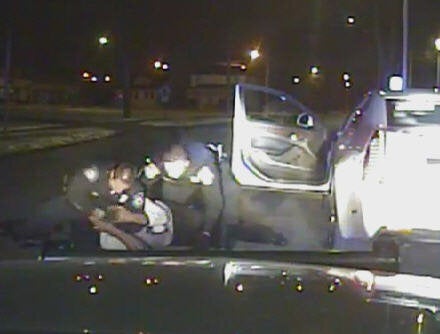Two things I know to be true. Sadly, these two truths clash. In fact, these truths loathe each other.
My first truth is that if police are to make more widespread use of Tasers (officially known as conducted energy weapons), some type of audio-visual devices should be activated before the Tasers are fired. That will help protect both the police and anyone in conflict with police from false accusations.
My second truth is that modern police services are desperately short of sufficient personnel and money to do their job properly. Police budgets are tight and getting tighter. The Canadian Charter of Rights and Freedoms makes it a lot more time-consuming for cops to process a case in 2014 -- up to 10 times as long -- than it was a quarter of a century ago. Every restriction imposed on police increases costs and time consumed. Deploying cameras in conjunction with Tasers is no exception.
Former Supreme Court Judge Frank Iacobucci brought down a report last week filled with 84 recommendations that would lead to much improved interaction between the Toronto Police Service and those he calls "people in crisis" -- be they emotionally disturbed, mentally disturbed or cognitively impaired.
These are people who should be receiving adequate treatment for their disabilities, but they're not. Health and social services are also squeezed financially, so the police -- on the streets 24/7 -- have become both enforcers of our law and de facto social workers.
Iacobucci has issued a vast array of prescriptions for not just the police, but for governments and other public institutions that must better help the police do their job. As for the police themselves, his recommendations are designed to upgrade their social worker skills and attitudes, including improved recruitment, training, coordination among the police and healthcare communities... the list goes on. It's a good list, but it's a list that will require still greater investment of time and money in our police services.
That includes the judge's recommendation that the Toronto Police Service consider a pilot project to equip more line officers with Tasers.
One must remember that while Iacobucci was clear that his report was not a commentary on particular past incidents, it was commissioned by TPS Police Chief Bill Blair after the death a year ago of Sammy Yatim. Yatim was a disturbed man brandishing a knife on an otherwise vacant streetcar. He was gunned down by an officer now facing a charge of second-degree murder.
Iacobucci clearly believes that the carefully restricted use of Tasers could lessen the chances of lethal outcomes in these kinds of clashes, but he wants to see the experiment monitored closely to see whether he's right. He also wants either body cameras or Taser-mounted cameras to accompany Taser use as part of the experiment.
I have argued in favour of cameras in conjunction with Taser use many times. A study conducted by police in Rialto, California demonstrated the number of complaints against police officers in the city plummeted by 88 percent the year after body cameras started being used. The use of force by police dropped by 59 per cent. Sure the meshing of Tasers and cameras is a no-brainer.
Except... except for those ogres -- time and money -- hovering in the shadows.
It's not just the additional cost of the audio-visual equipment. There are a number of other complications. How much will it cost to store a massive library of audio-visual recordings? If audio-visual equipment is only to be activated in situations in which footage might be needed for court evidence later on, who makes that decision? Who decides what footage should be kept and what can be thrown away? Who pays for the extra time it will take officers to go over the audio-video evidence so nothing is left out of their notes? Cases can collapse if the two don't jibe.
Given the challenges presented by the Iacobucci recommendations, I have to applaud the response I have heard from Chief Blair, who had the guts to commission the report in the first place. Most other senior police officers I have talked to across the country are either well down the path Iacobucci has set out, or want to go in that direction. If they can afford it.
Cops and robbers. It used to be so simple. Not these days.
ALSO ON HUFFPOST:
